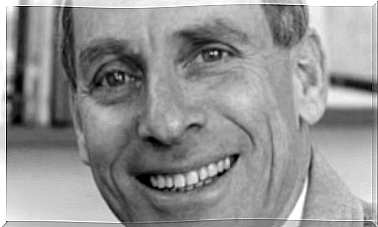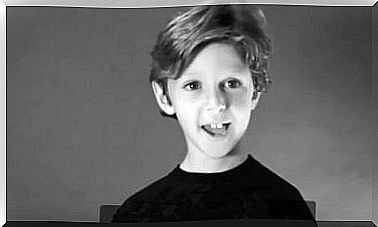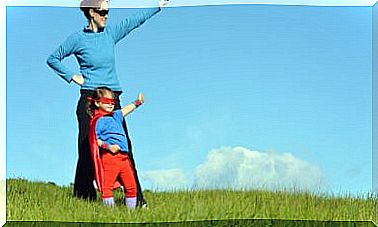What Is The Law Of Least Effort?

The law of least effort raises a truth that almost all of us know, out of common sense. He says that when something can be done in different ways, the best option is always the one that involves the least energy expenditure. Why? Because it is more efficient, which leads us to obtain the same result using less effort.
Effort is an attribute that gives greater value , objective and subjective, to projects. A gemstone is more valuable because it is scarcer and therefore more effort must be made to find it. An achieved goal is valued more when it implies the overcoming of great obstacles. So, in principle, we can say that we agree that effort is a positive and laudable value.
However, a greater effort does not always generate better results. You can keep an accounting by hand. Add, subtract and do all the operations through manual calculation. The same is achieved with software in much less time and with a greater guarantee of absence of errors. In that case, the amount of effort invested is not proportional to the results obtained. Actually, in the first case, there was a waste of energy.
The Law of Least Effort does not attempt to eliminate difficulty, nor does it encourage us to choose only tasks that are easy. Rather, the focus is on finding a way to reduce the effort required to achieve a goal. Let’s look at this in more detail.
” The secret of my happiness is not to strive for pleasure, but to find pleasure in effort .”
-Andé Gide-

1. Obstacles and the Law of Least Effort
The law of least effort is closely related to giving up control and letting everything flow. Some may think that this is an approach that exalts the laid-back or carefree attitude too much, but this is not the case. It is one thing to seek the simplest way and quite another to be negligent or irresponsible.
Ultimately, it is about adopting a new position in the face of obstacles. The difficulties are there. We find them in most everyday tasks. Sometimes we go to enormous lengths and yet things don’t turn out the way we expect. We feel overwhelmed by everything we have to do and it becomes increasingly difficult for us to commit our will to achieve it.
The obsessive attitude towards work easily leads us to stress and then to blockage. It is then that we are torn between total resistance to continue working and the obligation to do so. There is so much emotional energy that we use in this debate that we end up completely fatigued, while our results are not the best.
From there to constant frustration there is only one step. What we do is not proportional to what we achieve. We struggle a lot to focus on those work commitments and they end up getting fed up with us. Still, we have to do our duty. It is then when one of the principles of the law of least effort becomes valid: productivity does not depend on the amount of energy we invest, but on the clarity and inspiration that guide our actions.

2. Inspiration and productivity
The law of least effort indicates that the easy in principle must be valued as good. It also states that less is more and that “good” is enough. In other words, the simplest paths, involving the least effort, are the best. Likewise, he emphasizes that there are times when a less perfectionist attitude can potentially lead to better results.
There are many ways of doing things, but we are not always aware of this. Sometimes we are not even clear about the method we use. Perhaps we develop activities as we have seen others do, or as someone has told us that we should do them. But we have not stopped to think if the path we are taking is really the best way to reach the goal.
The law of least effort says that if you feel overwhelmed, blocked or fed up with an activity, do not continue with it. Your body and mind are screaming at you to stop. You got to that point by performing tasks in a mechanical way and you are paying the price. By standing still, doing nothing, or taking a cutting pause, you induce a schema change.
It is time to do something that recharges your energy. Something rewarding that allows you to place yourself in a different perspective. Then what follows is to reflect on how you approach your commitments. Is there an easier way to meet them? Are there unnecessary steps that you could delete? Think of five different ways to do the same. Evaluate. Question. Let creativity flow. Allow inspiration to appear and you will see how you can come up with better and, above all, easier methods.

3. The mind must find the way to flow
We agree that a fluid mind is more effective and saves a lot of effort. What many times we do not know is the way to make that mind flow. According to the principles of the law of least effort, five conditions must be met for this to happen. They are as follows:
- Work on yourself to complain less and stop blaming others.
- Do not try to change a situation just because, rather accept it, trying to understand it.
- Try to observe your problem as if you were a spectator and not the protagonist of it
- Open your mind and be open to new options and new paths.
- Work to find new answers and solutions, until one appears that really motivates you to act.
Stubborn resistance to accepting situations only contributes to blocking you. Complaining, blaming others and denying reality are forms of resistance. When it is possible to overcome that refusal to change the scheme, the decisive step is taken so that the mind begins to flow. This makes it easy for inspiration to emerge, with all its creative force.
4. Most importantly: enjoy
When we enjoy what we do, we usually get better results. It’s obvious. We put more effort into what captures our attention and interest. It is a pleasure to dedicate ourselves to it. Time flies and we have no problem making an effort too much so that everything is better. We flow.
Is there really a way for us to enjoy obligations? There is always a way to connect any activity with play. Suppose that what we must do is something boring and mechanical, like entering 500 tedious records in a database. What if we try to propose competitions with ourselves? Measure time and repeatedly exceed our own brand.

Science has said that one way to help us do these completely tedious tasks is to work on them for 20-minute chunks. After that time, make a cut, a break. And then the cycle repeats. Have you tried doing it? Try it and you will see how the number of mistakes you make decreases.
In conclusion: be flexible
Putting the law of least effort into practice so that your income is beneficial requires intelligence. A large part of our activities are carried out in a dynamic where inertia is what prevails. We rarely question whether routine procedures that work well might have a more effective alternative.
Thus, some of our “expensive” routines become a kind of straitjacket . They not only condition our actions but also, and more importantly, our thinking. Without realizing what hours, we end up living from rigid schemes, in which we feel trapped. That is where the law of least effort can help us choose more constructive and effective paths.
What’s valuable about this perspective is that it focuses on creativity and enjoyment. We can also introduce habits that encourage us to be more imaginative and to think more about our own well-being. Choosing the easier path makes us better and allows us to achieve more remarkable results.









